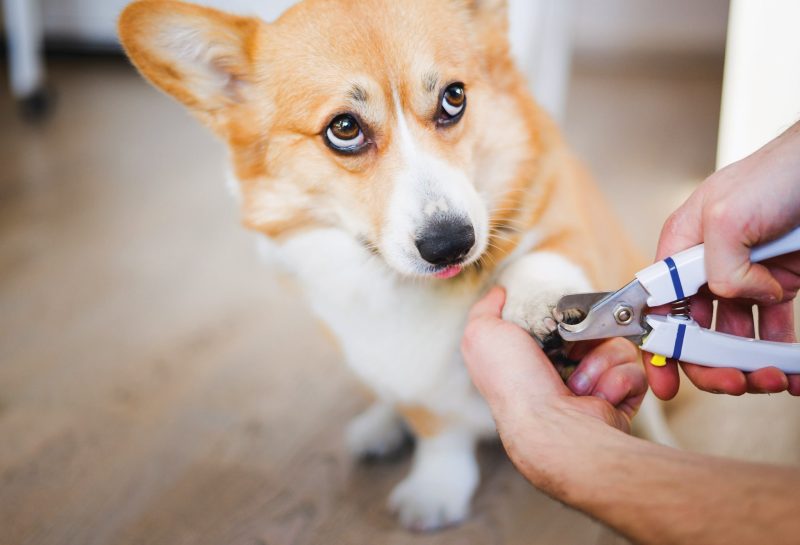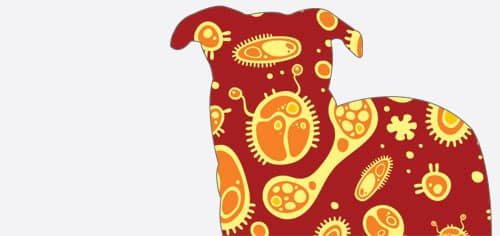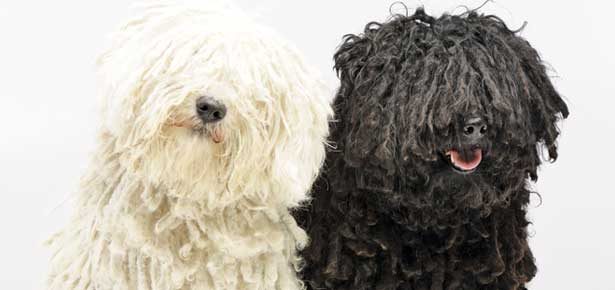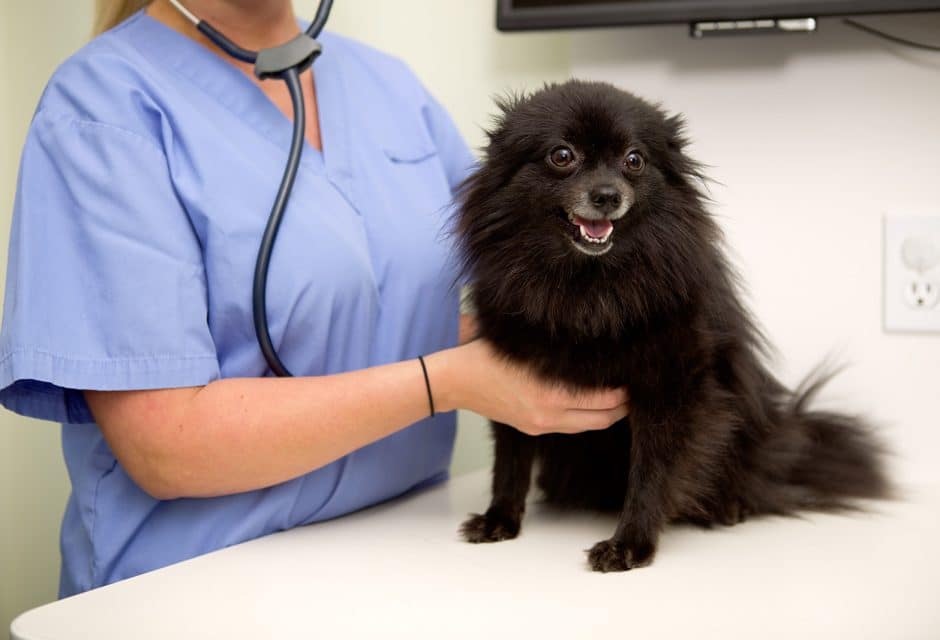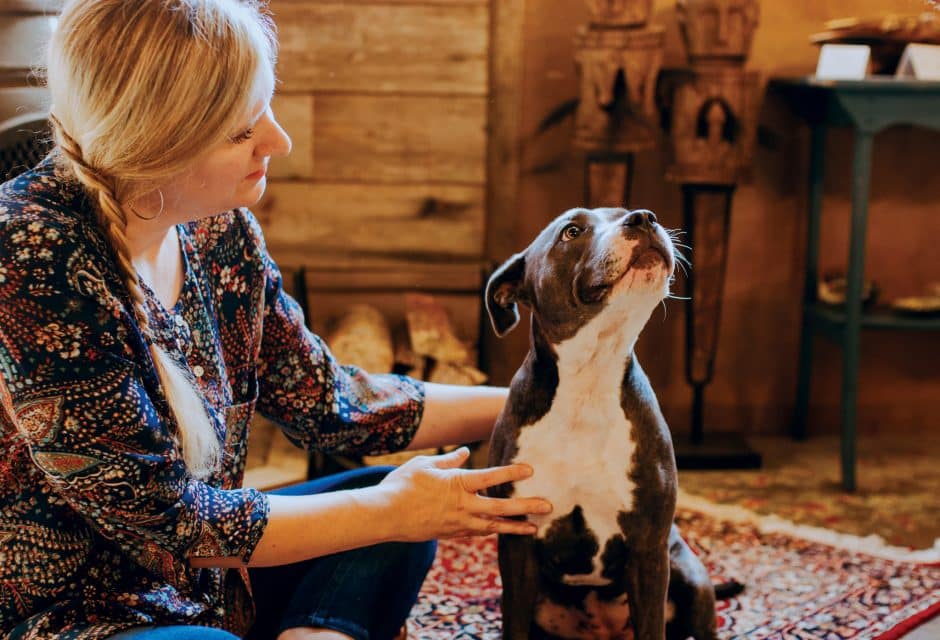

Cancer-Sniffing Dogs
The remarkable canine nose is saving lives, diagnosing cancers with incredible accuracy
The moment Lauren Gauthier set eyes on the skinny, scared hound helping to shepherd fellow rescues into her car, she saw something special in the abandoned dog. “She was kind of maternal,” says the 42-year-old Amherst, New York-based attorney and founder of Magic’s Mission Beagle and Hound Rescue Inc. What Lauren didn’t know was that the rescued dog’s nurturing instinct would one day save her own life.
Lauren decided to personally adopt the dog, whom she named Victoria. They bonded quickly. The hound tapped into Lauren’s moods, snuggling close when she was down.
But a few months into her adoption, Victoria’s behaviour turned bizarre. She obsessed over a tiny red bump on her rescuer’s nose, sniffing continually at the spot and gazing worriedly at Lauren. “I thought, she’s trying to tell me something,” she says.
She was right. A dermatologist took one look at the bump Lauren had dismissed as a pimple and performed a biopsy on the spot. It came back as a basal cell carcinoma (skin cancer) and was removed just in time. Had the skin cancer gone deeper, Lauren’s face would have been disfigured, and she might even have lost her life. “I was pretty in awe,” she says.
Victoria’s olfactory ingenuity isn’t unusual among canines. Service dogs have been sniffing out sickness for decades, sounding the alarm for plunging sugars in people with diabetes or impending seizures in people with epilepsy.
Although the multiplicity and complexity of molecules produced by cancers make them harder to spot, research since the l990’s has documented dogs’ unerring nose for breast, colorectal, ovarian, prostate, and skin cancers.
These findings could prove to be of massive help with the tussle against tumours. Many cancers sneak up on us without warning, producing symptoms only when they’re too late to treat. Routine tests on seemingly healthy humans flush them out earlier, when we can nip them in the bud. But our current screening tools, such as mammograms or PSA tests (for prostate cancer), are notoriously inaccurate.
That’s why researchers in the canine cancer detection field hope to harness dogs’ sensitive snouts to root out disease in its infancy. “The goal will be to develop…an early detection test that’s accurate, low cost, and non-invasive that everyone can have,” says dog trainer Dina Zaphiris, founder and CEO of InSituFoundation, which trains cancer-detection dogs in Chico, California. “So far nothing has beaten the dog.”
Illustration by Nicolle Lalonde
The animals’ superpowers of scent are firmly rooted in anatomy, says head dog trainer Liz Dick at Bio Detection Canada (Langdon, Alberta). Unlike humans, who exhale their whole breath, dogs retain a portion of air in their noses, concentrating odour molecules. It’s here they are soaked up by 300 million scent receptors (humans have only five million of these). These sensors relay olfactory information directly to the dogs’ odour processing centre in the brain, which is proportionally forty times the size of our own.
Dogs’ sophisticated smelling apparatus helps them access information inscrutable to most other species. “They can smell a drop of blood in a huge gigantic swimming pool,” says Liz. Dogs can also break down odours into their components. “You can come into a house and sense someone baked a chocolate cake, whereas a dog…knows exactly what you put into it,” says Liz. Dogs can also be trained to zero in on some data and ignore others.
Dogs’ prowess for perception evolved from their forebears. A keen sense of smell enabled wolves to track prey whose scent had grown cold and divine their direction, says Liz. One whiff uncovered easy targets like the weak and the sick.
Humans, too, signal sickness through their smell. Cancer has a particularly rank odour. “It smells a little bit like…rotting tissue,” says Dina. Our cells normally produce carbon dioxide and other waste products, but the abnormal metabolism of cancerous tissue generates altered by-products (volatile organic compounds or VOCs) that escape the tumour and enter the blood, breath, and body fluids.
The first rigorous study of dogs and volatile organic compounds was pioneered in 2003 by acupuncturist Michael McCulloch, who treats cancer patients at the Pine Street Foundation in San Anselmo, California. His interest in canine cancer detection was sparked by his own pet Poodle, who unerringly sniffed his clients’ bodies in the precise location of their tumours. Michael surmised that the animal was picking up the telltale markers of malignancy—the VOCs—right through their skin.
As the Director of Research, Michael set out to test whether dogs could discern the same chemicals in the breath. He enlisted patients with lung and breast cancers as well as healthy controls to breathe into plastic containers which were then stationed throughout the lab. Michael recruited Dina to teach five dogs to distinguish between them, sitting down in front of malignant samples and walking past the benign ones. A few months later the animals had to sort out a new set of normal and anomalous breath samples. The results were staggering. The dogs were 90 percent accurate in picking up lung cancer, and 88 percent sensitive to breast cancer. Their specificity was 99 percent for both malignancies, meaning the dogs also labelled the normal samples correctly. “Our jaws hit the ground,” says Dina. “We couldn’t believe it.”
But not every dog is cut out for the job. Canines with a desire to please and a penchant for pursuit are naturally motivated to seek out odours, says Liz. First you teach them to hunt down naturally appealing objects like treats. Then you pair a disease sample with the delicacy, gradually diminishing the amount of food and then eliminating it altogether. Once the dogs are tracking the cancer smell, you add in normal controls and reward them for telling them apart.
Dog trainer Heather Junqueira, founder and CEO of Bioscent Inc., located in Tampa, Florida, has taught hundreds of dogs to cotton on to cancer. Her interest in the field was sparked by her father’s death from kidney cancer, found too late to cure. “It was so hard for me to believe that with modern medicine…it took so long to figure out,” she says.
“Research since the l990’s has documented dogs’ unerring nose for breast, colorectal, ovarian, prostate, and skin cancers.”
Heather made it her mission to leverage dogs’ extraordinary olfaction to unmask the malady in its infancy. “The earlier you find cancer…directly correlates with the number of lives that you save,” she says. Hoping to develop a screening tool for the sickness, she launched her own canine cancer detection study in 2019. Dogs were taught to distinguish between blood samples of patients with diagnosed lung cancer from those of healthy controls.
The results surpassed expectation. Even when she tried to distract the dogs with savory treats, the animals correctly nailed the malignant samples 96.7 percent of the time. “The sensitivity of their noses…was really incredible,” she says.
In spite of these promising findings, Heather recognizes the limitations of routine canine cancer testing. For starters, a screening facility would need to process thousands of samples a day. Since any one dog can only work for a limited shift, you would need an untenably large team of animals to do the job. “It wouldn’t be economically feasible,” says Heather.
Regulating the canine cancer screening process could also be tricky, says Dina. “I don’t think the FDA can approve dogs…they’re not a medicine, they’re not a machine.”
Luckily there are other ways to profit from the dog’s diagnostic deftness. “Our biggest potential is to figure out what they’re smelling,” says Heather. To do this, researchers are using chemical analysis to separate the tumour’s waste products into smaller units, which are then individually re-examined by the dogs. The samples identified as cancerous are further subdivided. Eventually researchers hope to zero in on the characteristic elements (or biomarkers) emitted by a malignancy. Once they’ve identified these volatile organic compounds, scientists can develop a simple screen, similar to a pregnancy test, to detect a particular cancer.
But a cancer’s signature smell is not synonymous with the sum of its parts, says MIT physicist Andreas Mershin, who has built an electronic nose using artificial intelligence. “A list of…molecules and concentrations…doesn’t work.” Although some cancers produce elevations in certain VOCs, there is no consistent recipe to reproduce a tumour’s unique odour. Environmental factors like humidity can affect their smell, and even two people with the same disease could produce somewhat different waste products.
When we focus so narrowly on the odour’s chemical properties, we miss grasping the gestalt, or the overall experience, says Andreas. Just as we appreciate a melody only when its notes are played, so too the dog formulates a “cancer-y” smell on top of the actual molecules it sniffs. “Dogs don’t know any chemistry (but) manage to get the feeling of cancer,” says Andreas. “That’s why they’re so powerful.”
The physicist means to harness that power by teasing out the animals’ smelling strategy. “It’s not ….analytic…it’s…synthetic,” he says. In a recent breakthrough study on prostate cancer odour detection, he combined the data from machines calibrating the tumour’s chemicals with the way dogs sorted through the same urine samples. He found that the canines attended more to some VOCs than to others. Their accuracy was affected by training—dogs rewarded for correctly labelling both malignant and benign samples did better than the ones who scored treats only for positive identifications. Drawing on these findings, Andreas programmed a robot to sniff out prostate cancer.
In the long run, adding olfaction to the diagnostic toolbox will save more lives. “Whether that’s the dog or a machine, it doesn’t matter,” says Dina.
Canadian Cancer Dogs’ co-owner Glenn Ferguson is rooting for the (under)dogs. The animal lover was baffled after watching a documentary on dogs’ phenomenal perception. If canines were besting machines in their predictions, Glenn couldn’t understand why doctors weren’t taking advantage of their abilities. When he asked oncologists the question, they were universally dismissive. “It didn’t matter how accurate dogs were…they basically said they don’t see dogs used clinically,” says Glenn. “That made me angry.”
And determined. Glenn has dedicated his life to fashion an all-inclusive cancer screen using dogs. The former graphic designer bought a team of dogs (three pups from Kijiji), and handed out thousands of flyers requesting breath samples from recently diagnosed cancer patients. “It takes a bit of nerve to do this,” he admits.
After boning up on training protocols, he taught his team to recognize the general smell of cancer. They were 95 percent accurate.
Glenn has focussed on firefighters in the U.S., whose exposure to toxic gases makes them especially susceptible to cancer. To date he has screened 38,000 of them.
The procedure is simple. After breathing into a surgical mask, each firefighter mails it to Port Hood, Nova Scotia, where the dogs make their diagnosis. Results are sent to the fire department managers, who relay the information to their colleagues. Those with positive results are advised to see their doctor and undergo procedures like colonoscopies to spot and remove precancerous growths like intestinal polyps, which can turn malignant if left unchecked.
So far the dogs are spot on in their verdicts, even catching some pre-cancers. For proof Glenn tells anecdotes of firefighters with positive screens who turned out to have polyps. Once these were removed, their cancer screens turned normal.
While these stories are heartening, so far they haven’t been backed by quantitative studies. In order to evaluate the precision of a screening tool, you need data tracking participants’ health over time. But the cost of such a thorough investigation would outstrip his means, says Glenn. Some firefighters are also leery of sharing their results. “We depend on people volunteering that (information)…a lot of people won’t participate,” says Glenn.
The absence of hard data doesn’t faze Chicago Fire Department Chief Dana Brown. Last year her own screen came back positive. When a red spot appeared on her back shortly afterwards, she rushed to her dermatologist. The doctor brushed her off. “I’m not really concerned about that,” she said. But a week later the biopsy showed a malignant melanoma, one of the most aggressive cancers, and the physician arranged an urgent admission for treatment. Luckily the tumour was caught in time.
It was a close call. Had the dogs not sounded the alarm, Dana would likely not be alive today. “In a year…it would have been in my brain and my lungs, and I would be dead,” she says.
Today Brown shares her story with as many other firefighters as possible, hoping to enroll them in the canine cancer screening program. So far, four of her colleagues who joined the initiative have also discovered early tumours that were successfully treated. “It feels like I have a purpose,” says Dana. “To keep pushing forward and to keep sharing.”
Join the newsletter and never miss out on dog content again!
"*" indicates required fields
By clicking the arrow, you agree to our web Terms of Use and Privacy & Cookie Policy. Easy unsubscribe links are provided in every email.

